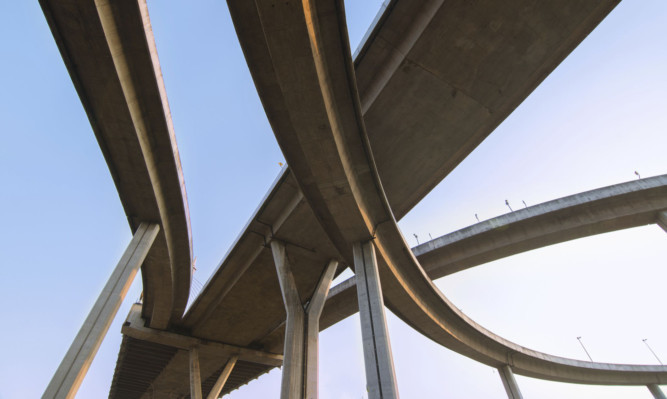
European-style expressways are set to turn some of Britain’s major A-roads into “mini motorways”.
Over the next five years, the newly-formed Highways England, which replaces the Highways Agency from April 1, will upgrade key A-roads into expressways – a new classification between an A-road and a motorway.
To get traffic flowing more freely, junctions will be modernised, with roundabouts and traffic lights removed and emergency refuge and maintenance areas provided.
It is possible that bicycles and slow-moving vehicles such as tractors will be excluded from these new roads.
In addition, advanced technology will be used to detect and help clear incidents more quickly and get traffic moving.
According to The Times, 18 major routes are initially set to become expressways, with a further seven projects being considered.
The Times said that among the first routes would be the A303 and the A30 from the junction with the M3 in Hampshire to Exeter in Devon; the A1 north of Newcastle; the A14 from Huntingdon to Cambridge; the A556 between the M56 and M6 in Cheshire; and the A46 between the A1 and M1 in the East Midlands.
Other schemes include the A38 from Exeter to Camborne in Cornwall; the A27 along the south coast of England; the A3 south of Guildford in Surrey; and the A2 through south east London to Kent.
Similar expressways already exist in Italy, the Netherlands and Bulgaria. They are described by officials as “consistently good roads which are largely or entirely dual carriageway, with grade-separated junctions, giving most users a motorway-quality journey”.
Drivers are also set to benefit from the provision of roadside wifi to send traffic updates to drivers.
Motorways in the South East will be targeted initially through a £150 million innovation fund, which will also look at trialling driverless vehicles on the road network.
Under the plan, the new wifi technology could encourage the provision of “in-vehicle, vehicle-to-vehicle, and vehicle-to-infrastructure technologies” along the M2, M20, M26 and M25, the Department for Transport (DfT) said.
A Highways Agency spokesman said: “Innovation will be a major driving force behind everything Highways England does over the next five years.
“We will work closely with the DfT, specialists and the private sector on technology and strategic growth that will make best use of our roads.
“These changes will improve journeys for our customers, boost safety and drive economic growth.”

Enjoy the convenience of having The Sunday Post delivered as a digital ePaper straight to your smartphone, tablet or computer.
Subscribe for only £5.49 a month and enjoy all the benefits of the printed paper as a digital replica.
Subscribe